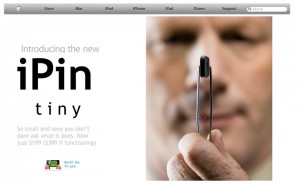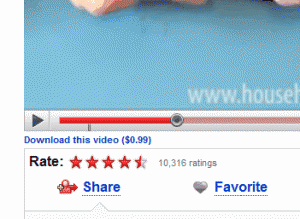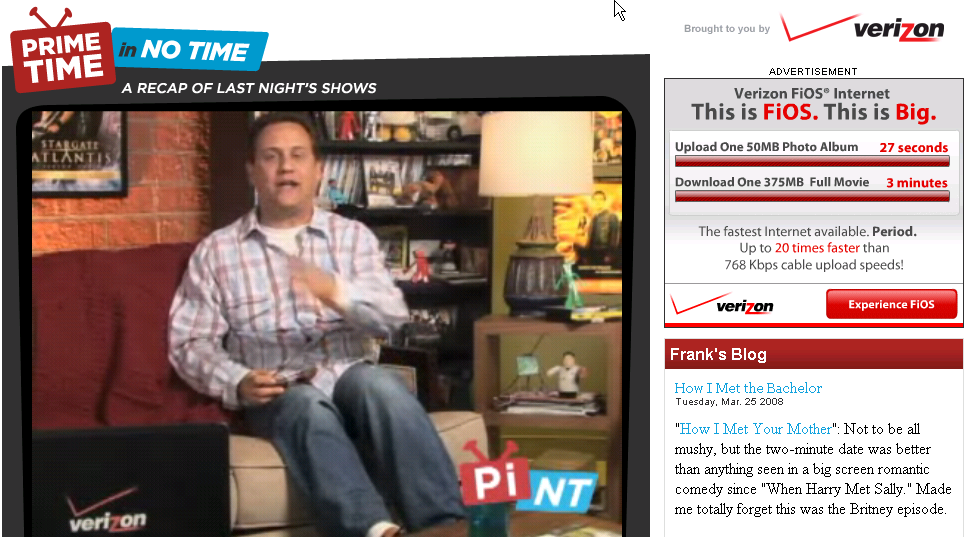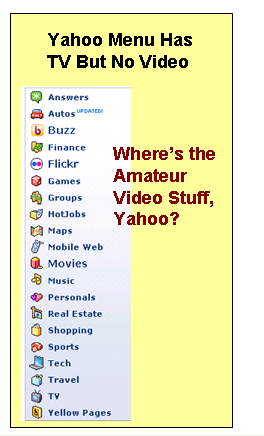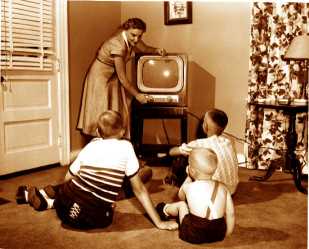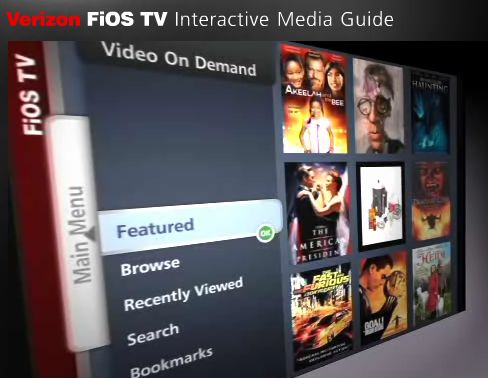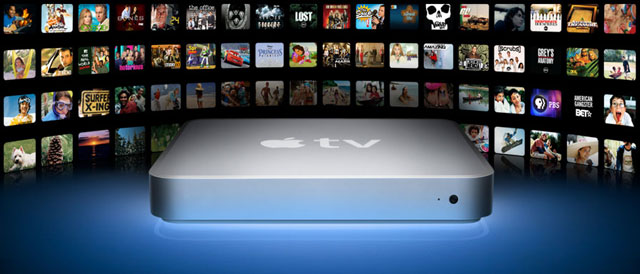The poor television networks and cable. In one of the seminal points of the evolution of online-video-to-television and mobile, the networks are putting legitimate near-term business desires and needs above consumer demand and innovation. You could view recent moves — like blocking GoogleTV and Hulu’s paid app with ads — as strength and discipline. Avoiding threats to their lucrative cable TV partnerships. Or you could view all of this as a tragic flaw — not dissimilar to the music industry’s early failures in the dawn of digital distribution.

It’s the perilous curse of any comfy industries that is reticent to let high-potential new revenue streams and consumer demand cannibalize their cash cows … and it’s the cart blanche for startups that produce new models to meet consumer needs.
But guess what? You have a choice (see options below). Ironically, I have Verizon FIOS servicing my home as I write this blog entry, and the company is updating its offering to provide more for less (less expensive additions, faster broadband and soon web-via-TV). Still, the cable-TV box is quickly dying (see WSJ). The FTC is making it harder for CableTV companies to force its own boxes on people, yet most of the “unwashed masses” don’t know they have other options. It amazes me that most people are oblivious to the fact that the CableTV box and the DVD player are the least interesting things that can feed their HDTV.
Meanwhile, Hulu is also slipping: yesterday I was about to download the Hulu app on my iPad, until I saw that it had one of the worst ratings I’ve yet seen on iPhone/iPad apps! Apparently the “Generation I” isn’t keen on the subscription charge plus commercials, and Hulu is missing the opportunity to develop an ad-supported wide “anytime, anywhere” distribution of network content without intermediaries. In a similar flub, Google TV is being blocked by networks and Hulu, because they’re no doubt rooting for a network-friendly cable alternative that will take forever and suck. But they’re counting on it stopping a “great migration” away from monthly cable.
You can’t blame the networks for wanting to charge for content, which is the very basis of a very fair $99 AppleTV model (where consumers pay “ala cart” to rent specific television shows, and it’s commercial free HD content without a subscription). But the “one to watch,” in my opinion and others, is Netflix’s evolving model, a fixed-price (as low as $8) “all you can eat” movie rental service which is becoming much more generous and easy, as viewing options rapidly expand from DVDs by mail to desktop, Roku, AppleTV, Netflix, some DVR and DVD players, and iPhone. We don’t even bother with those red Netflix envelopes by mail, and our days of visiting Blockbuster are completely over. Sometimes we accidentally pay $5 for Verizon’s “on demand” movies, only to discover they’re part of the free Netflix library to which we subscribe!
Hulu’s bi-polar approach, driven surely by networks and not by Jason Kilar, the company’s smart, flexible and customer-oriented CEO. Kilar has created a site designed first for viewers, and offers advertisers novel ad options (like allowing viewers to view one trailer instead of multiple in-stream ads, or giving consumers the choice of what ad they view). But Hulu also has to protect its content partners, who aren’t keen on anything that threatens the addictive income they fetch from cable providers.
Just like smart phones exploded in the past 18 months, the online-video & television merger is just entering “the tipping point.” It appears the emergence of GoogleTV has everyone innovating in desperation. So what should you do?

- Join Netflix for if you watch more than 2-3 movies a month. It’s the most cost-efficient and easiest way to watch movies because it’s “all you can eat” on a fairly decent library. To enjoy it beyond the laptop, you’ll want a $99 AppleTV or $80 Roku. The quality is fantastic, and it’s easy to use.
- Unless you don’t mind the horribly slow and counter-intuitive cable boxes, you may still want a TiVo. It’s frustrating to pay TiVo a monthly subscription (around $15) and still pay your cable provider maybe $5 for a card allowing TiVo to read the signal. But TiVo is the gold-standard for easy interface, and sells refurbished boxes. Even better, there’s one you can rent, which helps you avoid the one-two pain punch of a purchased unit plus subscription. TiVo, like most new Blueray DVDs and retail DVRs, also offers Netflix and other services (like Amazon and Blockbuster, for when Netflix doesn’t stock the latest movies).
- Keep your eye on CableTV box alternatives: AppleTV, GoogleTV and all of the new BlueRay DVDs with advanced options. You’ll find there’s far more for your HDTV to enjoy when it’s not plugged into that archaic cable box, but most of us accept these dumb boxes without question. As I learned recently from Cluetrain Manifesto author Doc Sears, the manufacturers of these boxes will attest the fact that the cable providers “dumb them down” for various reasons, not the least of which is preservation of a dying business model.
- Finally, if you hate watching television via a hot laptop, you may be a candidate for an iPad. It’s small, it streams Netflix well, and it’s a good bed/couch option if your spouse is watching Nancy Grace and you want to avoid getting a TV lobotomy.



